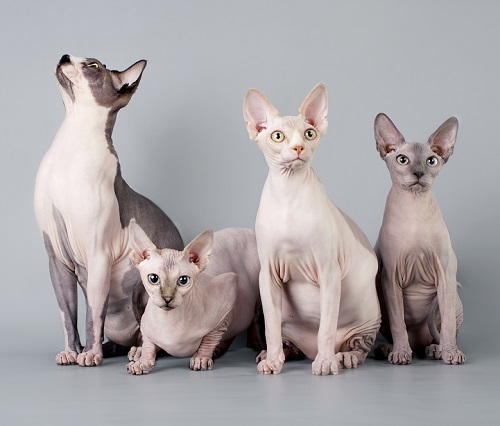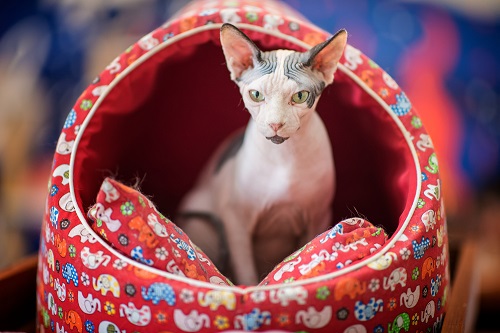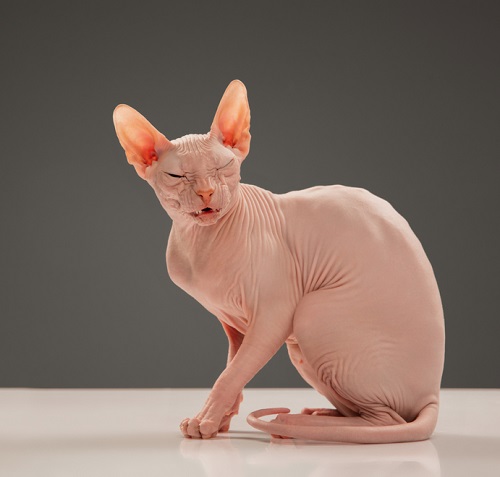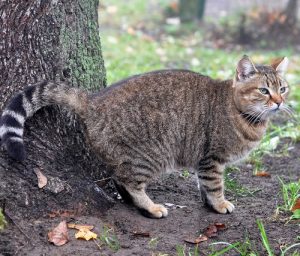From frosty winter nights to breezy spring days, Do Hairless Cats Get Cold? Get the answer in this informative article!
If you’re considering bringing a hairless kitty into your family, you might be wondering, ‘Do Hairless Cats Get Cold?’ especially during those frost-bitten winter nights. Let’s find out the answer below.
Do Cats Shed More in the Summer? Find out here!
Can Cats Be Hairless?

Yes, it’s possible for a cat to be hairless. Hairless cats, also known as Sphynx cats, are a unique breed that naturally lacks fur due to a genetic mutation. Instead of a traditional coat of fur, they have a thin layer of downy hair or are completely hairless. Despite their lack of fur, hairless cats have soft, warm, and velvety skin. These cats require special care to protect their delicate skin from the sun, cold temperatures, and excessive moisture.
Why Are Cats Hairless?
The following are the most common reasons for a hairless or balding cat:
- Genetic Mutation: Hairlessness in felines is often a result of a genetic mutation. The Sphynx breed, for example, has a natural genetic variation that makes them hairless or have very fine hair.
- Selective Breeding: Breeders may intentionally breed cats to maintain the hairless trait, resulting in breeds like the Sphynx, Peterbald, or Ukrainian Levkoy.
- Hormonal Imbalance: Certain hormonal conditions, such as hyperthyroidism or hypothyroidism, can lead to hair loss in kitties. Treating the underlying hormonal imbalance can sometimes restore their coat.
- Allergies or Skin Conditions: Cats can develop allergies or skin conditions that lead to excessive scratching, resulting in hair loss. Identifying and addressing the underlying cause can help alleviate the issue.
- Medical Treatments: Some medical treatments, such as radiation therapy or chemotherapy, can cause temporary or permanent hair loss in kitties.
- Stress or Anxiety: Cats experiencing high levels of stress or anxiety excessively groom themselves, leading to hair loss.
- Aging: As cats age, they can experience natural hair thinning or hair loss, similar to human baldness.
Do Hairless Cats Get Cold?

Hairless felines have a unique physiology that makes them more susceptible to feeling cold compared to felines with fur. Without the insulating layer of fur, they lack natural protection against chilly temperatures. As a result, hairless cats experience discomfort and cold-related issues. To keep them warm, provide them with appropriate clothing and regulate indoor temperatures.
How Cold is Too Cold for Hairless Cats?
Hairless kitties can tolerate slightly cooler temperatures. However, it’s generally recommended to keep them in environments with temperatures between 75-80°F (24-27°C) to ensure their comfort and well-being. Anything less than the mentioned temperature is harmful to hairless felines.
How Do Hairless Cats Maintain Their Temperature?
Hairless cats have unique ways of maintaining their body temperature despite their lack of fur. Here are some ways they regulate their temperature:
- Higher Metabolic Rate: Hairless cats have a naturally higher metabolic rate compared to felines with fur. This increased metabolism helps generate more body heat to keep them warm.
- Seek Warmth: Hairless cats are often drawn to warm spots in the house, such as sunny windowsills, heating vents, or cozy blankets. They will actively seek out warm areas to help regulate their body temperature.
- Human Contact: Hairless felines enjoy cuddling and seeking warmth from their human companions. They may curl up on laps or snuggle against warm body parts to absorb heat.
While hairless cats have mechanisms to regulate their body temperature, offer them a warm and comfortable environment to ensure their well-being.
How To Tell if Your Hairless Cat is Cold?

Here are some indications that your hairless kitty is feeling cold:
- Shivering: Just like humans, kitties shiver when they feel cold. If your hairless cats are trembling or their muscles contract rapidly, it could be a sign that they are trying to generate heat.
- Seeking Warmth: Sitting near heating vents or snuggling against warm objects are clear indications that your furry companion is feeling cold.
- Curling Up: Hairless cats may curl up into a tight ball or wrap themselves in blankets or clothing to conserve body heat.
- Cold Ears and Paws: Touch your cat’s ears and paws. If they feel noticeably colder than usual, it means that your kitty’s body temperature is dropping.
- Lethargy or Hiding: When hairless cats are cold, they may become lethargic. If there is a significant change in your cats’ activity level or they are spending more time in secluded areas, it’s a sign of discomfort due to cold.
- Piloerection: Piloerection, commonly known as “goosebumps,” is when the hair or fur on a cat’s body stands up. While hairless kitties don’t have visible fur, you may notice their skin appearing slightly bumpy or raised, which is a response to cold temperatures.
How To Keep Your Hairless Cat Warm?
To ensure your hairless kitty stays warm and comfortable, follow these tips:
- Maintain a Warm Indoor Environment: Keep the temperature in your home between 75-80°F (24-27°C) to provide a comfortable environment for your hairless cat.
- Provide Heating Options: Place heated beds, blankets, or pet heating pads in areas where your cat likes to relax. Ensure they are safe, pet-friendly, and have temperature controls to prevent overheating.
- Use Clothing and Accessories: Consider dressing your hairless kitty in specially designed cat clothing, such as sweaters or jackets, to provide an extra layer of insulation during colder periods.
- Create Warm Sleeping Areas: Offer your kitty warm and cozy sleeping spots, such as beds lined with soft blankets or heated cat condos.
- Block Drafts: Hairless cats are more sensitive to drafts. Ensure windows and doors are sealed properly to prevent cold air from entering the house.
- Limit Outdoor Exposure: Hairless kitties should primarily be kept as indoor pets. If they do go outside, ensure they are protected with warm clothing or blankets. Also, keep their outdoor time during colder seasons.
- Use Humidifiers: Hairless cats can benefit from increased humidity levels, as dry air can affect their skin. Consider using a humidifier to add moisture to the air, especially during winter months.
- Monitor Their Comfort: Keep an eye on your cat’s behavior and body language. Look for signs of discomfort or coldness, such as shivering, seeking warmth, or hiding. Adjust their environment accordingly to ensure their comfort.
- Provide Warm Human Contact: Hairless cats enjoy the warmth of human contact. Snuggling or allowing them to curl up next to you provides additional warmth and comfort.
Do Hairless Cats Get Cold? Quick Takeaways!
- Hairless cats exist and lack fur due to a genetic mutation.
- Completely shaving a cat’s hair is generally not recommended unless advised by a veterinarian.
- Reasons for hairlessness include genetic mutations, selective breeding, hormonal imbalances, skin conditions, stress, and aging.
- Hairless felines are more sensitive to cold temperatures and can experience discomfort if exposed to low temperatures for prolonged periods.
- Hairless cats maintain their temperature through a higher metabolic rate, seeking warm spots and enjoying human contact.
- Signs of a cold hairless cat include shivering, seeking warmth, curling up, cold ears and paws, lethargy or hiding, and piloerection.
- To keep a hairless kitty warm, maintain a warm indoor environment, provide heating options, use clothing and accessories, and create warm sleeping areas.



